#oakland public library
Explore tagged Tumblr posts
Text


Another find for the ole book find series.
This time there's quite a range of just over three years. Apparently the invasion wasn't all that interesting for most of that time. Wonder what went on there!
April 19, 1969 to June 21, 1972.
0 notes
Text
The Libraries That Made Me | Lakeview Branch Library


Welcome Ladies, Gents, and Nonbinary Folx to an interluding segment I'd like to call: The Libraries That Made Me.
In it, I will share my experience with a library I feel set me on the path to pursuing librarianship.
First up? The Lakeview Branch Library in Oakland, CA.
In the aftermath of my son’s birth, I spent a lot of time walking with him around the Lake Merritt area. We’d walk short distances to the corner store and even around the lake itself just to get out of the house; however, when a need arose for me to have access to the internet and Word in order to complete my classwork, we found ourselves walking the couple of blocks up to the library as well.
The best way to describe the atmosphere and environment of the Lakeview Branch is “intimate”—a word used here to mean “cozy,” or “comfortable,”—it’s one of the smallest libraries I’ve ever had the pleasure of being in and for such a small building there is no lack of material. Somehow the librarians have managed to utilize every nook and cranny and create literal literary nooks for almost every age group and subject matter; including a small storytime area for teeny and tiny patrons as well as four open-access (as opposed to catalog) computers.
In hindsight, I can see that it was my time spent in this branch that cemented my appreciation for all that the public library was outside of a building for books: it was a place where I could freely surf the internet and complete schoolwork without interruption, it was a place where I could find required books for school, interesting books to pass the time, and informational books to help me navigate my new journey into motherhood. Additionally, there was a sense of security in letting my son be a toddler. So many spaces seem to be becoming increasingly hostile to children, but in the library I could bring my toddler and there’s a designated area where he can play with toys, find instruments, or just be in a colorful and bright environment.
It is easily one of my favorite libraries I’ve ever called a temporary home away from home.
References
Oakland Public Library, Lakeview Branch: Oakland Public Library, photo, https://oaklandlibrary.org/locations/lva/.
Julia Gidwani, Lakeview Library at Lake Merritt, photo, https://www.510families.com/locations/oakland-public-library-lakeview-branch/
#the libraries that made me#information professions#lakeview branch library#libraries#public library#oakland#california#opl#oakland public library#lake merritt#librarianship
1 note
·
View note
Photo

The exterior of the Main Library branch of the Oakland Public Library (Oakland, CA) in Alan Myerson’s Steelyard Blues (1973).
0 notes
Text

(edited and revised 3/4 front view of right side of 1241, by railfan Otto Perry, presumably at the SP engine service at the yards in Oakland, California. Date, July 25, 1937.)
#1241#0-6-0#southern pacific#oakland#history#hdr#otto perry#denver public library#railfan#steam engine#my edit#oakland yard
18 notes
·
View notes
Note
With that lbj photo from the lbj library, how do you get help from them for things like that?
It might sound too easy to be true, but with that particular photo from the LBJ Library that I posted, I just asked! I had searched through the online photo archives (which they were in the process of updating at the time) and couldn't find the photo, so I reached out to the LBJ Library with a broad description of what I was looking for an archivist found a high-quality file of the image that they e-mailed a link to and a bunch of information about it. As I mentioned, that's something that they've done numerous times for me over the years and I'm so grateful. About ten years ago, I was looking for a photo of LBJ at the LBJ Ranch that I had seen on display during a visit to the LBJ Library. I don't know why but it was immediately one of my favorite photos that I'd seen as LBJ, but I couldn't find it anywhere and couldn't even describe it very well because it's just a photo of LBJ walking by himself:

Despite the fact that I couldn't really describe the photo in much detail and couldn't even remember which part of the museum it was displayed in, the archivists and volunteers at the LBJ Library went to work hunting for it, found it, and sent it to me. It's in a frame on a bookshelf next to a framed photo of me and some volunteers with Barack Obama from a 2007 campaign rally in Oakland.
Over the years, I've also received some help confirming certain facts or getting information about specific sources I was searching for from the awesome archivists who work for the U.S. Senate and the U.S. House of Representatives. The Senate Historical Office has been particularly helpful over the years and the Senate and House websites are fantastic resources for Congressional history. The House even has a standalone website dedicated to history and the incredible art collection at the Capitol that one can easily spend hours exploring. And the best part about all of this is that they didn't do these things for me personally because I'm cool and they are fans of my blog (although I'm sure ALL of those things are true because obviously I am cool and my blog is legendary and I'm also maybe even a hero). These are true public servants and these resources are available to all Americans interested in the nation's history. In many cases, it's as easy as sending an e-mail to the archivists or historians from the respective organizations.
#History#Presidents#Presidential History#National Archives#Presidential Libraries#LBJ Library#U.S. Senate#U.S. House of Representatives#Senate Historical Office#National Archives and Records Administration#NARA#Archives#Archivists#Historians#Congress#Congressional History#Senate Historians#Senate History#House History#Political History
22 notes
·
View notes
Text
California Public Library Access—More Than You Knew!
This came in today's email from my local library (City of Alameda)—California residents have access to libraries in other California cities! I did not know this!
Any California resident can get a free library card at the following city libraries — just fill out the application to access all their digital “stacks”! Los Angeles: click here San Diego: click here San Jose: click here Oakland: click here Checking out books and other materials from the library is great for several reasons: *Increased use of library services allows libraries to request additional funding from state and local budgets. *Authors get royalty payments for library check-outs — another great way to support the writers, musicians, and artists you love! *It gives your library a better idea of what's in demand. If you’re looking for a book, film, or album that your library doesn't carry, please request it so artists can get their work into more libraries and seen by more people!
Expand your horizons!
34 notes
·
View notes
Text

Harry Houdini Scrapbook [Photographs with Jack London]
Creator/Contributor: Quincy Kilby (1854-1931), creator; Harry Houdini (1874 –1926), contributor
Date created: 1904-1926
Physical description: scrapbook
Summary: This remarkable scrapbook was compiled by Houdini’s good friend Quincy Kilby, a Brookline resident and Boston theater impresario. Materials in this large volume were collected over a twenty-year period and include personal letters, photographs, programs, newspapers clippings, and other unique memorabilia. Knowing that Kilby was amassing this collection, Houdini would send him items specifically “for your Houdini scraps book.”
The scrapbook is open to an eclectic spread of photographs of Houdini with Jack London and their wives in Oakland, California, in 1924; a lecture advertisement in which Houdini promises a sensational expose of miracle-mongers; and a note on Houdini’s personal stationery to Kilby with an apologetic postscript, “I was in Boston but was so fixt could not get away. Only 1 night.”
Location: Boston Public Library, Rare Books & Manuscripts Department
42 notes
·
View notes
Text
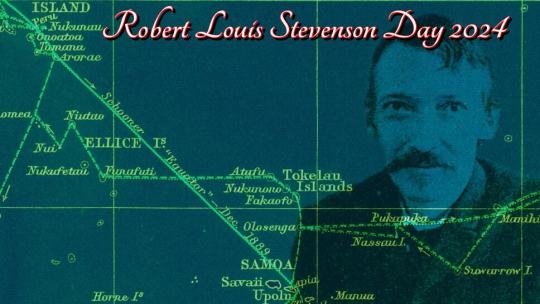


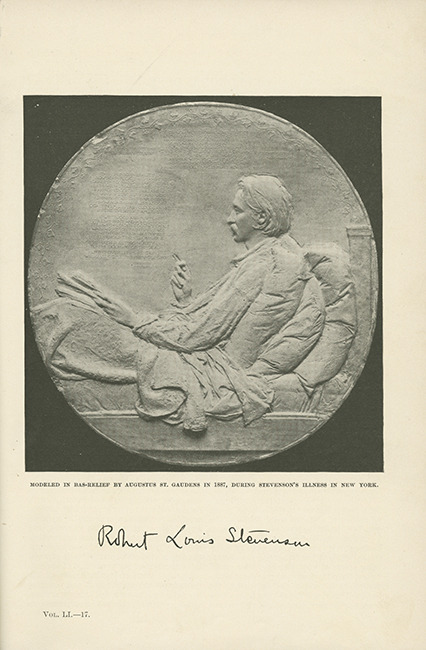

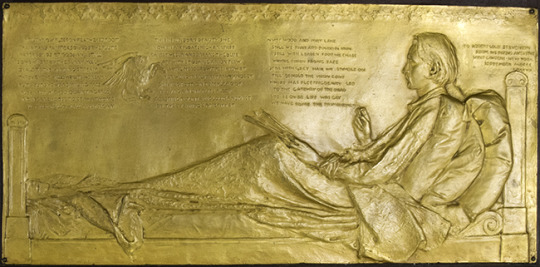
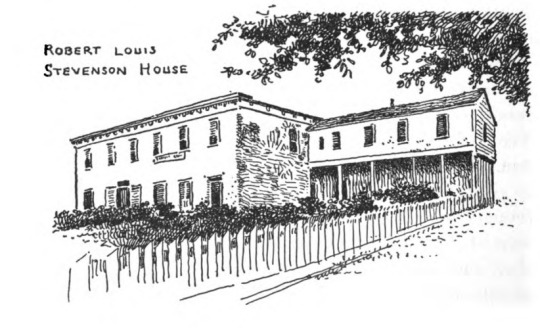
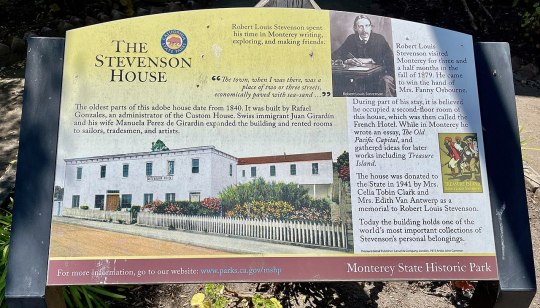
November 13th 1850 saw the birth in Edinburgh of Robert Louis Stevenson, the renowned essayist, poet, and author of fiction and travel books.
Nowadays we remember the man with an anual event, Robert Louis Stevenson Day 2024 includes a number of events for fans to attend. The event which includes readings, screen shows and an unbirthday party. Although most events take place here in Edinburgh on Saturday you can find the unbirthday party in Monterey Public Library, Clifornia. Remarkaqbly this dates back to 1891 when Annie Ide, the 12-year-old daughter of the American Land Commissioner in Samoa, told RLS of her disappointment that there were no special celebrations to mark her birthday on Christmas Day, he came up with an ingenious solution. As a qualified Scottish advocate, he drew up a legal document declaring: ‘I, Robert Louis Stevenson . . . have transferred and do hereby transfer to the said A.H. Ide, all and whole my rights and privileges in the thirteenth day of November, formerly my birthday, now, hereby and henceforth, the birthday of the said A.H. Ide.’ Now each year the Robert Louis Stevenson Club of Monterey holds aan event as such.
Stevenson had a brief sojourn in the Californian town in 1879, he went there to court Fanny Osbourne, a woman he met in France and fallen deeply in love with. Fanny was from Oakland and had returned to attempt a divorce from her husband. She had summoned Stevenson from his family home in Edinburgh and he readily obeyed her request. He wrote a memoir of his journey from New York through the heart of America, to the West coast in The Amateur Emigrant. Although brief, Stevenson’s time in Northern California deeply affected his work, inspiring his classic tales of adventure. RLS boarded at the French Hotel there, it is now known as Stevenson Houseand is a museum and property of the Monterey State Historic Park. t holds a large collection of Stevenson papers and Stevenson memorabilia. It features a bas relief depicting the author writing in bed, as seen in the pics. The second of the photos is Robert Louis Stevenson's Memorial in St Giles, Edinburgh.
8 notes
·
View notes
Text



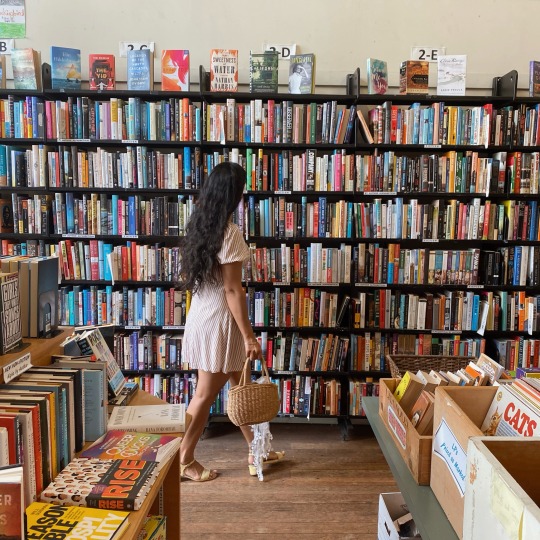
Reading is a form of attention.
Be it listening to the words on a drive or taking in the words of a book in the park with your eyes.
Reading is a book taking hold of you and refusing to let go of you. Going to your local bookstore, especially one where all the proceeds go to the library, can make the hours you spend there feel like participation in the community you want. I stepped into this beautiful old building full of books, The Bookmark Bookstore, which is owned and operated by the Friends of the Oakland Public Library and is staffed by volunteers. Isn't that the world you want to live in? Because I know I do. I know it's hard to just live sometimes because so much is out of our hands and is unjust, but supporting your community isn't. No matter how small the act might seem.
coffeeandbookss
#bookstore#books#reader#used books#books & libraries#library books#bookshop#book community#love#beautiful#life#bookshelves
22 notes
·
View notes
Text


“For me, wherever I go, I know my natural and eternal environment, and I know it as part of me and me of it. Beyond whatever we think, there is a darkly glimmering mystery far beyond reason and sanity, but full of the wholeness of beauty. It perpetually sustains and bestows all things with their own nature and being- perfectly, fully and without need for further elaboration or rectification. This is the sorcerous conception of deity.”— Robin Artisson, The Toadbone Treatise
It’s December and the air is warm here.
I peer out my window with drink in hand, watching the blood-splashed sun collapse beyond the horizon and into the highway. For a moment I relish being in a State where drinking a lime-juice cocktail isn’t a desperate plea for warmer days. Here winter never comes, and as such, we never need to change our tastes to heartier or heavier food and drink.
The Southeast is the only home I’ve known: a land of sweltering heat, mosquitoes the size of your arm, and uninterrupted madness via Florida Man. Where I dwell is nothing special: an average middle class town, the wonder and mystery of the city far away and only faintly sensed. The hustle and bustle of modern living remains only a faint rumor on the wind. Life moves along uninterrupted, save for twinges of change here and there. I can imagine such a life would not be enough for some, and truthfully it’s not enough for me. But in the meantime, there’s no rush; I drink deeply from the land and Spirits around me.
I think about Gordon’s piece on Natural Magic, the equation of Self+Spirit World+Place. It rings true to me. I think about the natural world around me, my own slice of it. Underneath the regular suburban dregs still beats the heart of that wild Florida, in every thicket and every wood. In them I’ve rattled open doorways between realms in areas smaller than some public parks, I’ve spoken with Swamp Spirits and learned the unspoken keys to plant identification, and I’ve traded payment and favors with the local Dead and seen them manifest right before my eyes. All these things happened in my hometown not in spite of it, but through it.
The great lesson of Folk Magick has always been that magick was right at hand, that you didn’t need a library of books or special clothes and wands to do it. In Hoodoo a quick trip to the grocery store and some significant places around town will allow you to hurl just about anything at people. When I’m particularly stuck for an ingredient I always go Journeying into the Spirit World and ask my friends there what might do the trick. And often the most powerful gifts are the simplest.
I came to read playing cards, to cast my eyes into the twisting nether realm of probability and possibility not through some online course nor through paid lessons from a teacher. I went down to the crossroads for nine nights around 11:45pm and called out to the One Who Dwells There to teach me, the only sacrifice being the time I spent there. And teach me He did. I found whole new ways of looking at the cards, as books and ideas seemed to drop into my view from all over; I read what I could, but the biggest advances seemed to come from just being out there, alone and in the dark, hearing whispers in my head and seeing symbols dance before my eyes. I read the cards now with great accuracy, with my window into the shifting seas of potentiality amounting to an admission fee of one dollar.
Often in life our own worlds can seem disenchanted, our existences too far away from any of “the action” to feel meaningful. As in spirituality so too in politics: the same way my heart longs to stir up the dead in St. Augustine it flutters at thoughts of joining in armed resistance somewhere in the streets of Rojava; as I ponder the possibilities of protective mojos made and blessed with the dirt from Castillo de San Marcos, I wonder what revolutionary potential I could add to the people’s struggles in Baltimore, Oakland, Chiapas, and Greece. Economics and familial ties, at least for the moment, always get the upper hand.
But I do not rest on my laurels. I read, I study, I speak with those around me. I consider myself the advance guard, the agent behind enemy lines. I gather folks of like mind around me and we plan, we plot, we create pockets of resistance and freedom. We are the first cells of the revolution you see, mitochondria that will one day evolve into a greater being. We put pamphlets, we put up posters, we engage in Direct Action. Rather then wait for ‘THE Revolution” I’ll do what I can here and now, building “the new world in the shell of the old.”
Those that simply wait for monumental change, or worse vote in the hopes it will come, display a distinctly unmagical air about them: they don’t believe anything can change unless everything does, they can’t imagine that their actions could move even the tiniest mole hill, they huff that the time is never quite ripe, that until some Unknown Messiah arrives we’d best simply hope for change.
Surely we, through direct experience, know better then this?
Can’t a hidden gesture or half-mumbled phrase move someone’s mind? Won’t a fervent prayer, a simple oil, and an intensity of Will attract unseen hands to guide you? Doesn’t the simplest mix of red pepper, black pepper, and sulpher cause the flames of hell to leap up at our command? You can’t have it both ways: either you and your allies can literally shift the movin’ and shakin’s of the luck plane as well as this artifice we call physical reality, or it’s all a sham.
I don’t know about you but I’ve got notebooks filled with proof that what we deem “inevitable” or “unmalleable” is plainly not so.
Magic presupposes we can change the foundations of the world around us. Why do our political beliefs so often not follow this maxim? Why are we waiting for some Vanguard, some Party, some Candidate, to rip up the noxious weeds of Capitalism and The State? Did we come by any of our magical knowledge by waiting or did we simply go out and start doing what we could? Wasn’t every bump in the road a lesson, every victory a confirmation that even against the odds we can win?
My tradition courses through the land and was born in struggle: against the State, against the Boss, against the Police. Under candle light and shroud of burning herbs I can feel the air thick with those that whispered or sang prayers in other times; they know, they understand: the battles may be different, the symbols may have changed, but the struggle has not. Candle flames burst with the same heat and energy raging away in my heart, teeth gritting in Nietzschean Will to change the world and break anything that stands in my way. Road Opener work or Revolution, what’s the difference?
My tradition is not alone: anyone laying hands on the practical magic of the past is touching a People’s History. You did what you could with what you had on hand, including whatever ghosts and goblins happened to be around. These people were in the same boat we are: under the heel of an oppressive state apparatus, one that could kill them at any time, all for the service of an economic elite. They too watched an increasing portion of all the value they created get siphoned away, hunger pangs and anxiety the mother of many a prosperity spell. Any good witchcraft carries with it the sublime scent of necessity; by the time you’re in the woods at midnight making pacts with unseen things it’s safe to say the usual channels of change have been blocked.
What else is magic but the metaphysical embodiment of Anarchism, of politics on a spiritual plane? That YOU could defy the laws of the “Lord” and make new arrangements for yourself, that YOU could gain insights and knowledge beyond your “station” in life, that YOU needn’t wait for someone to save you because you were going to save YOURSELF? Isn’t that what Sorcery is all about? Wasn’t it a battle against the dragon Zarathustra spoke about, the one that must be defeated, that must be slain?
“Who is the great dragon whom the spirit will no longer call lord and god? ‘Thou shalt’ is the name of the great dragon. But the spirit of the lion says, ‘I will.’ ‘Thou shalt’ lies in his way…”
The day is dead now, street lights and shabby store signs acting as artificial suns. The lights manage to keep the hum-drum thoughts of day still near, a collective religious belief in the firm and unvarying nature of reality, that nothing has nor will it ever change. The lights bring stability and safety. In this warm paradise where winter never comes it’s easy to believe the lie that most things are unwavering, that some things just stay the same.
For instance, global capitalism or a client’s bad luck?
But I have neither the time nor the inclination for such adult bed-time stories. I close the blinds and set about the work of changing the world around me. To succumb to the thoughts of static existence, of even settled accounts is preposterous. I call out to the Unseen with techniques and tricks propelled into the future by the most disadvantaged in this region while the plantations of the past have gone from places of frightening power to mere relics. While others buy and sell my soul flies right down to the primal, throbbing tap-root of the land around me; what was once an altar in any other townhouse becomes the Crossroads of All Existence; my voice no longer my own, my body wracked with spasms, I become a conduit for things that others claim can’t or shouldn’t exist.
Impossible? Can’t? Won’t? Shouldn’t? All these words are nothing to me! There is only The Will. And if you Will it, it is no dream.
#witchblr#witchcraft#folk magic#witches#Egoist-Communist#insurrection#liberation#Magic#occult#paganism#spirituality#autonomous zones#autonomy#anarchism#revolution#climate crisis#ecology#climate change#resistance#community building#practical anarchy#practical anarchism#anarchist society#practical#daily posts#communism#anti capitalist#anti capitalism#late stage capitalism#organization
7 notes
·
View notes
Text




Older Book Find Series
This was a large blue book that discusses forbidden channels. I mostly picked this up because of the pictures. I soon discovered this was an homage to the small-screen stars from throughout the ages.
I always wonder what brings authors such as this one to create such awesome works of art. I was three when this book came out...
From the AI (beta) description given by The StoryGraph, in case you'd like to flip through a copy at your own public library:
Forbidden Channels: The Truth They Hide from TV Guide by Penny Stallings is a must-read for anyone fascinated by the behind-the-scenes secrets and scandals of the television industry, who will revel in the book's irreverent and unflinching look at the world of small-screen stars and the hidden truths they'd rather keep from the public eye.
0 notes
Text
The Libraries That Made Me | Diamond Branch Library

As an elementary school child, I can count the amount of times that I went to the Diamond Branch Library on my hand. It was a little out of the way, it had a very small parking lot, and frankly, I don’t think there was any perceived reason to go to this particular branch when Eastmont was in walking distance.
Whatever the case, what few times I went to Diamond certainly stuck with me because as I entered my teenage years, I would often catch the bus just to come and sit and read for a couple of hours. In all honesty, I might have just liked the branch because going so far away made me feel more “independent”—of this, I can never be sure—however, what I do know is that because I had to get to this branch of my own accord, it became sort of like a dock for all my teenage activities. Diamond Library is up the street from Diamond Park, so when I would go on dates at the time I would stop by the library to check out books and then we’d sit on the grass and read together. Eventually, when we had a child, we’d take our son to this branch and do the very same thing—check out books, walk up the street to the park, sit on the grass and read. This was even the place where my son eagerly got his first library card.
1 note
·
View note
Text

Henry ‘Harry’ Albro Williamson (October 25, 1875 - January 3, 1965) was a postal worker and a prolific researcher and writer on the subject of Freemasonry.
He joined the Brotherhood of Freemasonry in 1904 and did extensive research documenting the progress of Black Freemasonry to determine its origins and authenticity. His research has been used by modern-day Masons to decry “bogus” Freemasonry. He was a member of the Grand Lodge of New York (Prince Hall) where he served as deputy Grandmaster, Grand Lecturer, and Grand Historian. He organized the first Lodge of Research in Prince Hall Freemasonry, becoming its first and only Master in 1943. He filled the role of Grand Secretary for over thirty years. His papers, consisting of over 1200, items including his Prince Hall Masonic collection were given to the Schomburg Center at New York Public Library in February 1936.
His parents were William Edward Williamson and Mary Elizabeth Pauline Williamson. He was born in New Jersey but moved to Oakland in 1880 when his father died. His papers are held in the New York Public Library Archives. He married Laura Julia Moulton (1901). He married Blanche C. Atkins (1920).
Works and publications
Origin of Freemasonry among Negroes in America (1914)
Negroes and Freemasonry (1920)
The Negro in Masonic Literature (1922)
The Prince Hall Primer (1925)
A Chronological History of Prince Hall Masonry, 1784-1932 (1934)
The Order of the Eastern Star (1938) #africanhistory365 #africanexcellence
2 notes
·
View notes
Text
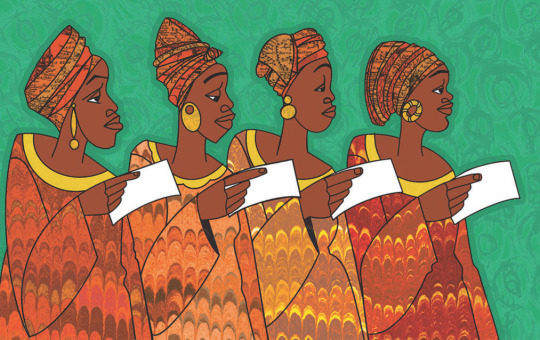
My design was chosen! It honors Black women.
I can't wait until its February debut. 🥰
#ajuan mance#library card#design#black art#black artist#black artists on tumblr#artists on tumblr#illustration#oakland library#library#books#libraries#oakland#bay area#oakland artists#bay area artists#black women#black woman appreciation#support your local library
15 notes
·
View notes
Text
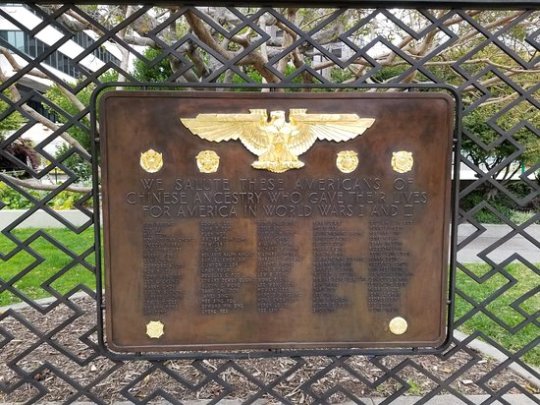
The then newly-restored plaque in St. Mary’s Square honoring the “Americans of Chinese Ancestry” who gave their lives for America in its world wars, November 10, 2018. Photograph by Doug Chan.
The Last Full Measure: St. Mary’s Square Monument to the Fallen of Chinese America
In his book San Francisco Chinatown: A Guide to its History & Architecture, historian Philip P. Choy, shared his observations about the monuments in St. Mary’s Square as follows:
“Across from the statue of Dr. Sun Yat-sen is a less imposing but more significant monument, with 97 names of Chinese American soldiers of our community, who made the supreme sacrifice in World War I and II. Every year on Veterans Day, the Cathay Post No. 384 and the VFW Chinatown Post march to the square to honor those who died for us, that they never be forgotten. This commemorative plaque and day of remembrance are more symbolic of Chinese America than Sun Yat-sen’s statue and the “Ten Ten” celebration.”
During the Second World War, thousands of young men and women enlisted or were drafted from Chinatowns, Japantowns (and concentration camps), Manilatowns, and other small communities across the country.
According to the U.S. Department of Veteran Affairs and researchers at the Oakland Museum, 13,499 Chinese American men fought in the armed forces. (Community estimates range as high as 20,000.) Approximately 75 percent served in the US Army, with ground units such as the 3rd and 4th Infantry Divisions in Europe and the 6th, 32nd and 77th Infantry Divisions in the Pacific. A quarter of the total Chinese American personnel under arms served in the Navy. Still others served in specialized units, such as the all-Chinese American 1157th Signal Corps -- part of 14th Air Service Group that would join the fight against Imperial Japan in the China Burma India theatre of operations.

Group of Chinese recruits for the U. S. Navy taking their oath on top of a captured Japanese submarine, on Navy Day in San Francisco Chinatown, October 27, 1942. Associated Press photographer unknown (from the collection of the San Francisco Public Library). As written on the verso: ""A two-man Jap submarine, captured after the sneak attack on Pearl Harbor, T.H. [Territory of Hawaii], began its nation-wide tour in San Francisco Oct. 27. In Chinatown, Chinese recruits for the U.S. Navy lined up on the vessel and took their oath. It was part of Navy Day ceremonies."
The Chinese American men who served in the armed forces during WW II comprised 20 percent of all such men in the continental U.S. As historian Iris Chang would write decades later, “ethnic Chinese men gave their lives disproportionate to their presence in the country.”
As in many cities, the public spaces in San Francisco had included memorials to the fallen in America’s wars. On Memorial Day on May 30, 1919, city officials and thousands of spectators dedicated a 15-acre plot as the “Grove of Heroes,” in remembrance of the US dead and wounded in the First World War. In 1930, a sculpture originally created by M. Earl Cummings for the Pan Pacific International Exposition was acquired and installed in the meadow adjacent to the grove. The bronze figure holding a laurel wreath became known as the “Doughboy Statue,” and it is readily noticeable from the park’s John F. Kennedy drive and promenade. On Armistice Day (now known as Veterans Day), November 13, 1932, public officials assembled again to dedicate an 18-ton granite boulder (reportedly quarried from Twin Peaks) to commemorate US war dead. The monument, which was sponsored by the Native Sons of the Golden West, was inscribed with the names of 748 men and 13 women, all local soldiers and volunteers who died during the Great War.
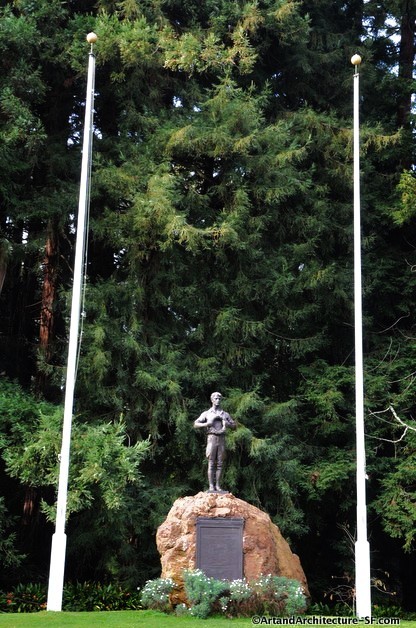
The Doughboy Statue in the “Grove of Heroes” in San Francisco's Golden Gate Park. The plaque, sponsored by the Native Sons of the Golden West and inscribed with the names of US dead in two world wars, omits the names of non-white military personnel killed in the line of duty.
Although Chinese Americans had served and died in WW I, no Chinese names had ever been inscribed in any of San Francisco’s war memorial monuments from that era. Their omission was hardly surprising. The Native Sons of the Golden West had been founded in July 1875 as a fraternal organization "embracing only the sons of those sturdy pioneers who arrived on this coast prior to the admission of California as a state." In the 1920s, the Native Sons adopted a white nativist stance on public policy issues. President William P. Canbu of the Native Sons wrote that “California was given by God to a white people, and with God’s strength we want to keep it as He gave it to us.” The Native Sons openly opposed Chinese, Mexican, and Japanese immigration. At the outset of the Second World War, the organization waged an unsuccessful legal battle for Japanese Americans to be disenfranchised.
The size of the returning cohort of Chinese American men (and the few women) from the Second World War had been unprecedented, and they produced a transformative generation of determined civic activists in the postwar era. As was the case with many other communities of color in the country, Chinese Americans had to struggle for acceptance and civil rights. Community activists such as John C. Young, a retired colonel from the United States Army and World War II veteran, made it their mission to join the struggle for Chinese Americans’ civil rights and participation in mainstream society. Young’s family led that effort by example as one of the first Chinese families to buy a home in defiance of racially-restrictive covenants against homeownership in San Francisco’s Richmond District (See the story here: https://www.outsidelands.org/chinese-in-the-richmond-alfred-john-young-and-connie-young-yu.php)
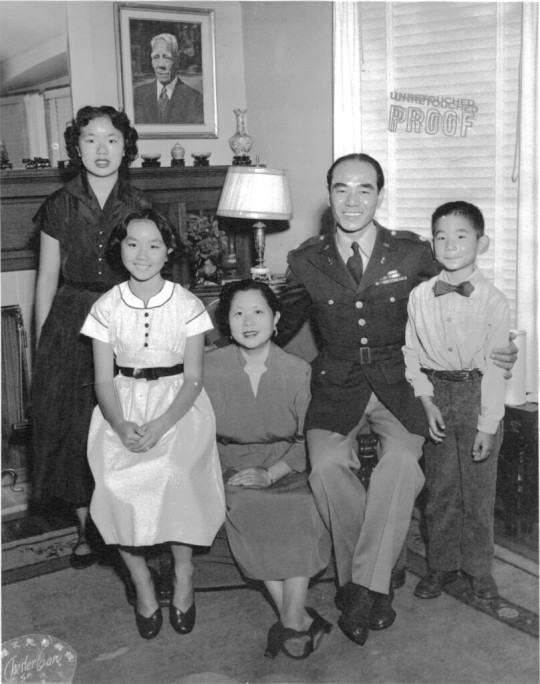
Left to right: Janey Young Cheu, Connie Young Yu, Mary Lee Young, Lt. Col. John C. Young, and Alfred John Young in the Young family house at 674 37th Avenue, circa 1952. (Courtesy of Al Young)
With the onset of the Cold War and actual armed conflict on the Korean peninsula, Chinese American leaders sensed that the path toward progress and acceptance of Chinese Americans had been jeopardized by the People’s Republic of China’s deploying troops to support North Korea’s military against UN forces.
As a commander of the American Legion Post #384 (Cathay Post), John Young and his fellow veterans spearheaded a proposal to erect a war memorial to the fallen Chinese American Veterans of World War I and World War II.
In 1951, the same year in which the Native Sons added the names of 16 white members who had died in World War II to the plaque on the rock pedestal of the Doughboy Statue, Chinese American veterans’ proposal to honor their fallen comrades in Chinatown gained acceptance.
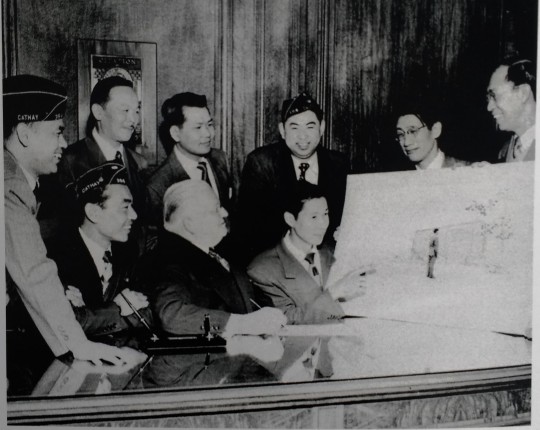
Members of the VFW Chinatown post and Cathay Post no. 384 of the American Legion huddle and review conceptual drawings for a St. Mary’s Square monument with San Francisco Mayor Elmer Robinson in the Mayor’s office in City Hall, c. 1951. Standing (left to right): Lim P. Lee, Peter H. Wong (unidentified veteran), Shaw Pange, Charles Leong, and Joseph Quan. Sitting: John C. Young, Mayor Elmer Robinson, and James Hall. Photographer unknown (from the collection of the late Col. John C. Young and his daughter Connie Young Yu).
Before 1951, a large and dramatic stainless steel statue of Dr. Sun Yat-sen, designed local sculptor Benny Bufano, represented the principal statuary in St. Mary's Square.
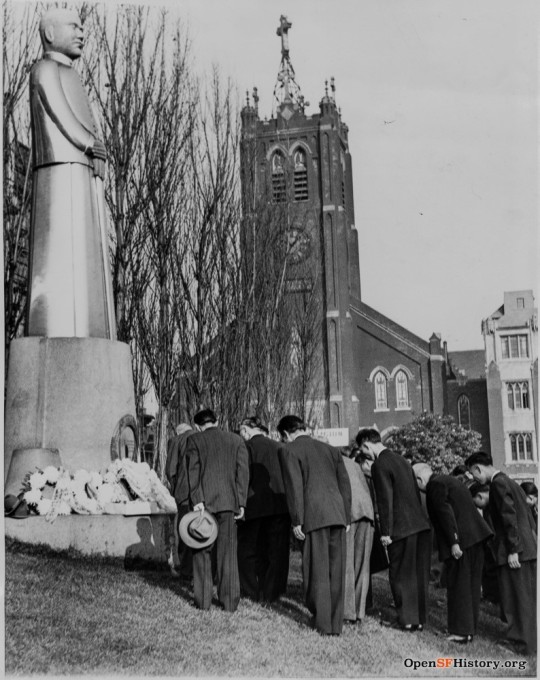
St. Mary's Square Nov 12, 1943. In this view of St. Mary's Square, looking north toward Old St. Mary's Church, members of San Francisco’s Chinese community bow before the statue of Sun Yat Sen on the occasion of Dr. Sun’s birthday. Among those attending the ceremony was Tse Kiong Sun, grandson of Sun Yat Sen. Photographer unknown (Courtesy of a private collector).
According to historian Phil Choy, the statue had been commissioned by the Chinese Six Companies to commemorate October 10, 1911, the day Dr. Sun's revolutionary party overthrew the Manchu government and established the Republic of China. As Choy wrote in 2012:
“For almost a century, October 10th, known by the Chinese as “Ten Ten,” was a major day of celebration in the community. Banners stretched across Grant Avenue. Organized by the Chinese Six Companies, drum & bugle corps and pupils from every Chinese language school dutifully paraded through the streets. Today the celebration no longer has 100% community support. Members of the Chinese Six Companies are divided; some still embrace the Kuomintang (KMT) Party of the former Republic of China (now the Taiwanese Government), while others support the People’s Republic of China.”
The efforts by the Chinese community’s veterans and supporters to honor the fallen of two world wars culminated in 1951 with the installation of the memorial plaque still seen today in St. Mary's Square. (A recounting of the memorial's dedication and other recollections by the daughter of one of the leaders in the effort to establish the monument, historian Connie Young Yu, may be heard here. (https://chiamgi.substack.com/p/col-john-c-young-profile?triedRedirect=true)
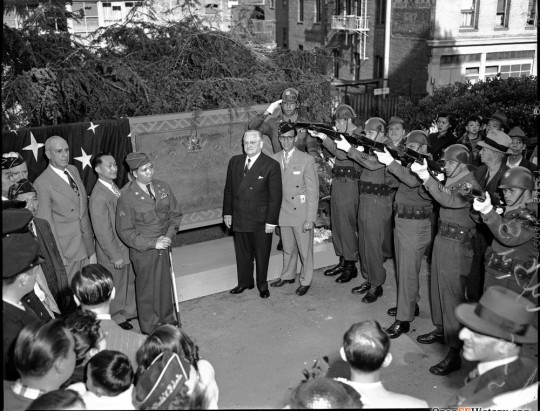
“Soldiers firing salute at dedication of memorial to deceased Chinese-American veterans at St. Mary's Square,” May 28, 1951. Mayor Elmer Robinson stands at center in dark suit. Photographer Unknown (Examiner Negative Collection / courtesy of a private collector)
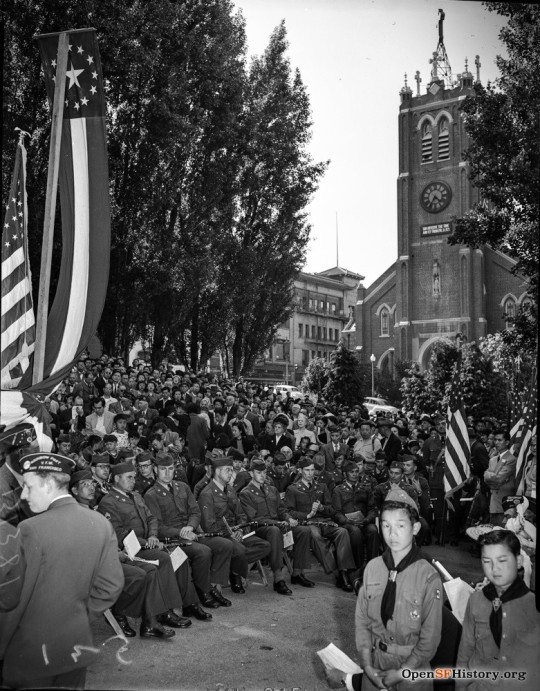
A large crowd attended the dedication ceremonies for the Chinese veterans memorial at St Mary’s Square on May 28, 1951. An Army band is seated with musical instruments, and members of the Chinatown Boy Scouts troop appear in the right foreground. Photographer unknown (form a private collection).
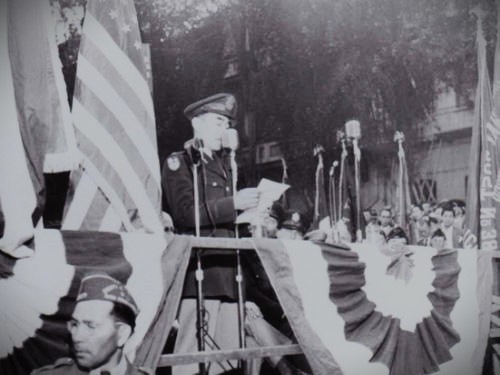
Civic leader and president of the Wing Nien Soy Sauce Co. Col. John C. Young (ret.) speaks to the crowd assembled on May 28, 1951, for the dedication of the memorial to Chinese American service personnel killed during the First and Second World Wars. His speech to the crowd occurred in the presence of his former commanding officer, General Albert Wedemeyer, under whom Young served as a heavy weapons officer in the China-Burma-India theater of operations.
If the irony of Chinese Americans' entering the US armed forces during wartime was apparent, it was never expressed publicly by those who had served honorably. Native-born, as well immigrants ineligible to naturalize as citizens by punitive immigration laws, had answered the call to service for an America that had, for most of the previous century, robbed, murdered, burned, lynched, taxed, and excluded the pioneer generations, while building much of the political economy of the American West on the strength of Asian labor.
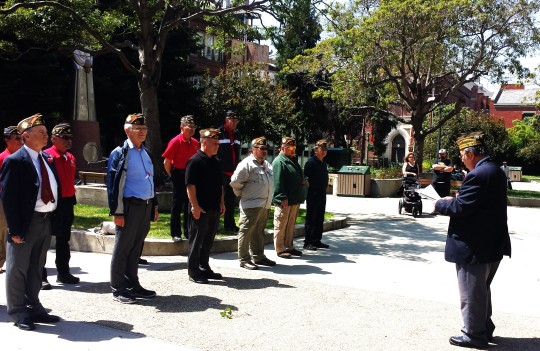

Veterans from Chinatown's American Legion Cathay Post 384 and VFW Chinatown Post 4618 assembled on Memorial Day 2016 in front of the WW I and II memorial plaque in St. Mary’s Square to commemorate the Chinese American fallen in all the nation’s conflicts and wars. Photograph by Doug Chan.
The numbers of Chinese Americans KIA and MIA from the world wars remain imprecise. The honored dead, including Medal of Honor recipient Capt. Francis B. Wai are, and will be, remembered in perpetuity for their extraordinary heroism and devotion to duty. For others, such as Lt. Kenneth Kai-Kee, the memories, grief and loss of those he left behind have already faded with the passing of family, friends, and loved ones.
The passage of time confers on community historians the duty to impart to each new generation the mission to remember the wartime sacrifices of Chinese America's sons and daughters. The debt to those who gave the last full measure of devotion must be honored in perpetuity.
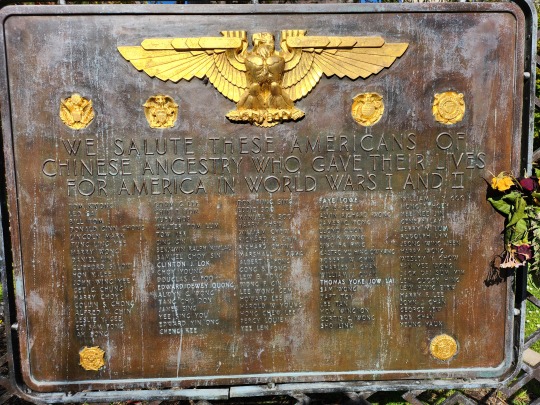
Photograph by Doug Chan.
#St. Mary's Square#Cathay Post veterans#Col. John C. Young#Francis B. Wai#Kenneth Kai-Kee#Lim P. Lee#Peter H. Wong#Shaw Pang#Charles Leong#Joseph Quan#Chinese American veterans memorial
4 notes
·
View notes
Text




Sabrina, we love your review of Wake: The Hidden History of Women-led Slave Revolts by Rebecca Hall!!!
You can check out Wake from your #locallibrary! Today, we highlight Oakland Public #Library @oaklibrary!
https://sistahscifi.com/products/wake-the-hidden-history-of-women-led-slave-revolts-hardcover
Credit to @sabrinabookshelf I read a graphic novel by Rebecca Hall called “Wake: The hidden history of Women-led slave revolts.” It’s based on the author of the book who is a Historian, a granddaughter of enslaved people, who sets out on a mission to find erased history of the women who planned & led slave ship revolts. This book is a mixture of nonfiction, historical fiction & imaginative fiction.
Rebecca Hall did a good job of filling in the gaps with her own story, but this novel was more about her struggles with finding the archival evidence.
This graphic novel would be an excellent source for younger readers or anyone new to the history of the transatlantic slave trade who prefers a more visual approach. It provides a good introduction to the topic and highlights the often overlooked role of women in resistance efforts.
@simonandschuster
@wakecomicbook
.
.
.
.
#sistahscifi #rebeccahall #wakethehiddenhistoryofwomenledslaverevolts
5 notes
·
View notes